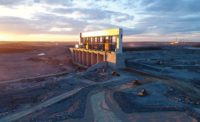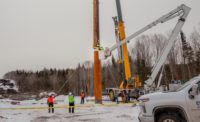The ministry continued, "Recovery is a very slow process as bears have low reproductive and dispersal potential and population gains could be reversed through degradation of core areas and associated landscape linkages. The ministry is very hopeful that the populations will continue to recover in the Upper Lillooet [River] Valley and the monitoring efforts will be critical to ensure this is the case."
In addition to publicizing its monitoring of the regional grizzly-bear population, the ministry has promised to develop a grizzly-bear management plan and ensure that construction activities occur "outside of identified sensitive periods for wildlife species."
Scott calls those assurances "somewhat meaningless." He claims the new transmission line in the habitat will be built just when old, disused logging roads are being covered over by fresh vegetation and returned as natural habitat to grizzly bears. "What they're doing will enable permanent access to habitat that didn't exist before," Scott says.
For its part, the provincial government said it is satisfied with its own analysis of the project's potential effects on grizzly bears and with Creek Power's assurances to limit the number of new roads and decommission temporary roads after the proposed project's construction.



Post a comment to this article
Report Abusive Comment